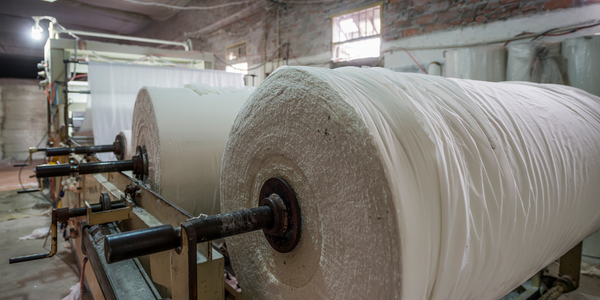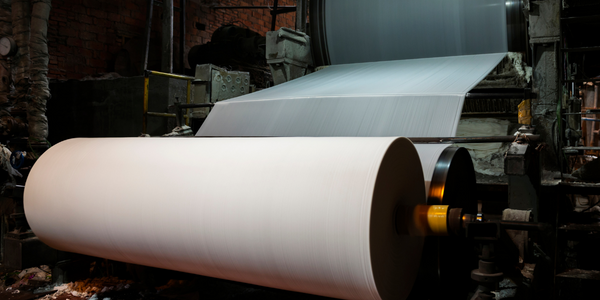下载PDF
Regional Bank Leverages Nintex RPA for Growth and Efficiency
技术
- 分析与建模 - 机器人过程自动化 (RPA)
- 功能应用 - 企业资源规划系统 (ERP)
适用行业
- 金融与保险
- 造纸
适用功能
- 维护
用例
- 租赁金融自动化
- 物料搬运自动化
服务
- 云规划/设计/实施服务
- 系统集成
挑战
金融服务行业的一家美国地区银行面临着支持其激进增长目标的挑战。该银行的目标是在五年内将其资产翻一番,达到 100 亿美元,并寻求使用流程自动化技术来提高生产力和客户满意度。然而,该银行现有的工作流程工具缺乏自动化功能,本质上只是作为清单发挥作用。该银行需要一个更全面的解决方案,能够实现电汇和薪资保护计划 (PPP) 贷款等关键流程的自动化。该银行的企业自动化团队开始研究推动和支持银行成功发展的方案。
关于客户
本案例研究中的客户是金融服务行业的一家美国地区银行。该银行制定了一项雄心勃勃的计划,计划在五年内将其资产翻一番,达到 100 亿美元。为了支持这种增长,该银行希望通过流程自动化技术提高生产力和客户满意度。该银行提供全方位的商业和面向消费者的业务。该银行有一个核心工作流程工具,但缺乏自动化,使其本质上是一个清单。该银行需要一个更全面的解决方案,能够实现电汇和薪资保护计划 (PPP) 贷款等关键流程的自动化。
解决方案
该银行决定结合使用 Nintex RPA、Nintex Workflow Cloud、Nintex Forms 等来实现关键流程的自动化。除了银行已经在利用的 RPA 和文档生成功能之外,Nintex 还提供了一套用于工作流程自动化、数字表单和移动应用程序的全面工具。 Nintex 还提供了与第三方软件(包括该公司已经使用的 Dropbox 和 Salesforce)的集成、具有成本效益的许可和易用性。该银行对 Nintex Workflow Cloud 和 Nintex 套件的其余部分进行了标准化,以满足其所有流程自动化需求。第一个实现自动化的业务流程是银行的汇出电汇流程。该银行的 IT 团队通过用捕获转账详细信息的动态 Nintex 表格取代纸质表格,彻底改变了电汇流程。 Nintex RPA 机器人验证客户的身份和可用银行余额,提取当前汇率,并自动计算指定货币的金额。
运营影响
数量效益
相关案例.

Case Study
Wireless Improves Efficiency in Compressed Air Systems
Hollingsworth and Vose wanted to improve the efficiency of their compressed air system, lower the electricity expense component of manufacturing cost in their commodity industry, and conserve energy leading to lowered greenhouse gas emissions. Compressed air systems degrade over time and become leaky and inefficient. Hollingsworth and Vose wanted to increase the frequency of system inspections without paying the high cost of manual labor.

Case Study
Real-time In-vehicle Monitoring
The telematic solution provides this vital premium-adjusting information. The solution also helps detect and deter vehicle or trailer theft – as soon as a theft occurs, monitoring personnel can alert the appropriate authorities, providing an exact location.“With more and more insurance companies and major fleet operators interested in monitoring driver behaviour on the grounds of road safety, efficient logistics and costs, the market for this type of device and associated e-business services is growing rapidly within Italy and the rest of Europe,” says Franco.“The insurance companies are especially interested in the pay-per-use and pay-as-you-drive applications while other organisations employ the technology for road user charging.”“One million vehicles in Italy currently carry such devices and forecasts indicate that the European market will increase tenfold by 2014.However, for our technology to work effectively, we needed a highly reliable wireless data network to carry the information between the vehicles and monitoring stations.”

Case Study
Process Predictive Analysis in Pulp and Paper Mill
Common paper breaks consequently lead up to 60 minutes of downtime, delaying a potential $10K per hour of production value process. Thus, defective products cause financial and damage company's reputation. Improving quality and reducing defect rates can generate millions of dollars of revenue per year for your company.

Case Study
Safety First with Folksam
The competitiveness of the car insurance market is driving UBI growth as a means for insurance companies to differentiate their customer propositions as well as improving operational efficiency. An insurance model - usage-based insurance ("UBI") - offers possibilities for insurers to do more efficient market segmentation and accurate risk assessment and pricing. Insurers require an IoT solution for the purpose of data collection and performance analysis

Case Study
Smooth Transition to Energy Savings
The building was equipped with four end-of-life Trane water cooled chillers, located in the basement. Johnson Controls installed four York water cooled centrifugal chillers with unit mounted variable speed drives and a total installed cooling capacity of 6,8 MW. Each chiller has a capacity of 1,6 MW (variable to 1.9MW depending upon condenser water temperatures). Johnson Controls needed to design the equipment in such way that it would fit the dimensional constraints of the existing plant area and plant access route but also the specific performance requirements of the client. Morgan Stanley required the chiller plant to match the building load profile, turn down to match the low load requirement when needed and provide an improvement in the Energy Efficiency Ratio across the entire operating range. Other requirements were a reduction in the chiller noise level to improve the working environment in the plant room and a wide operating envelope coupled with intelligent controls to allow possible variation in both flow rate and temperature. The latter was needed to leverage increased capacity from a reduced number of machines during the different installation phases and allow future enhancement to a variable primary flow system.






